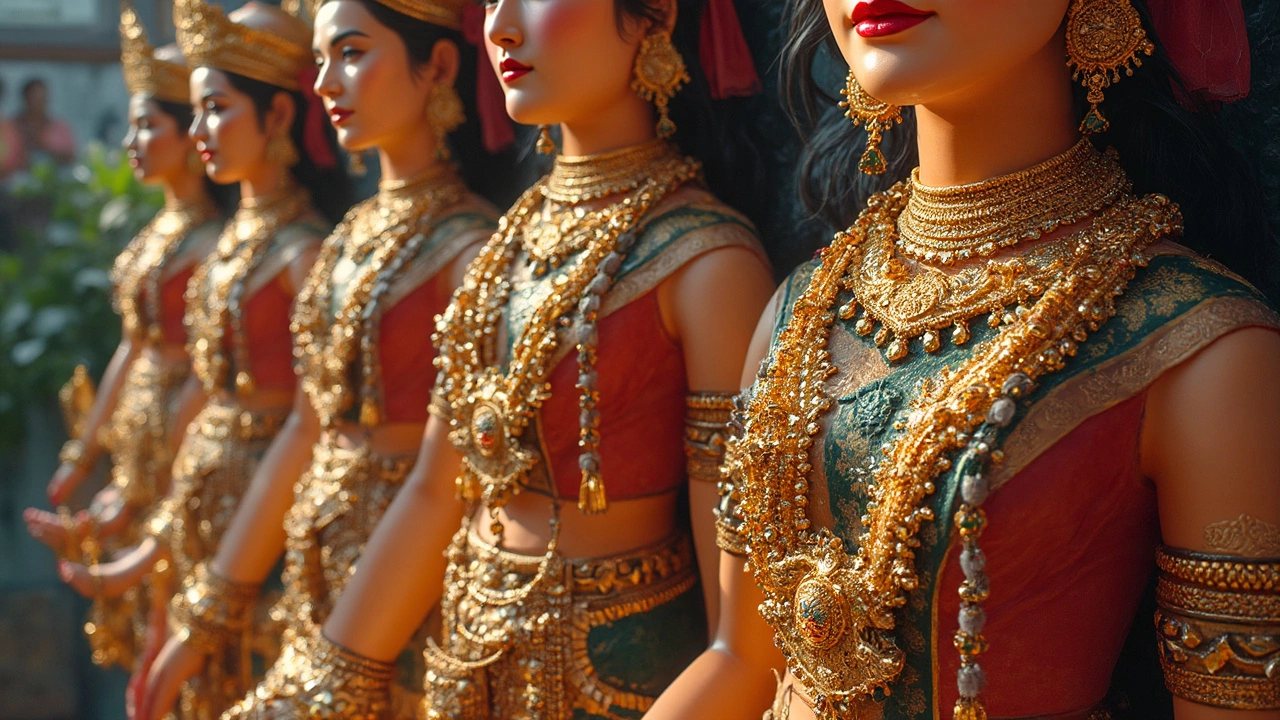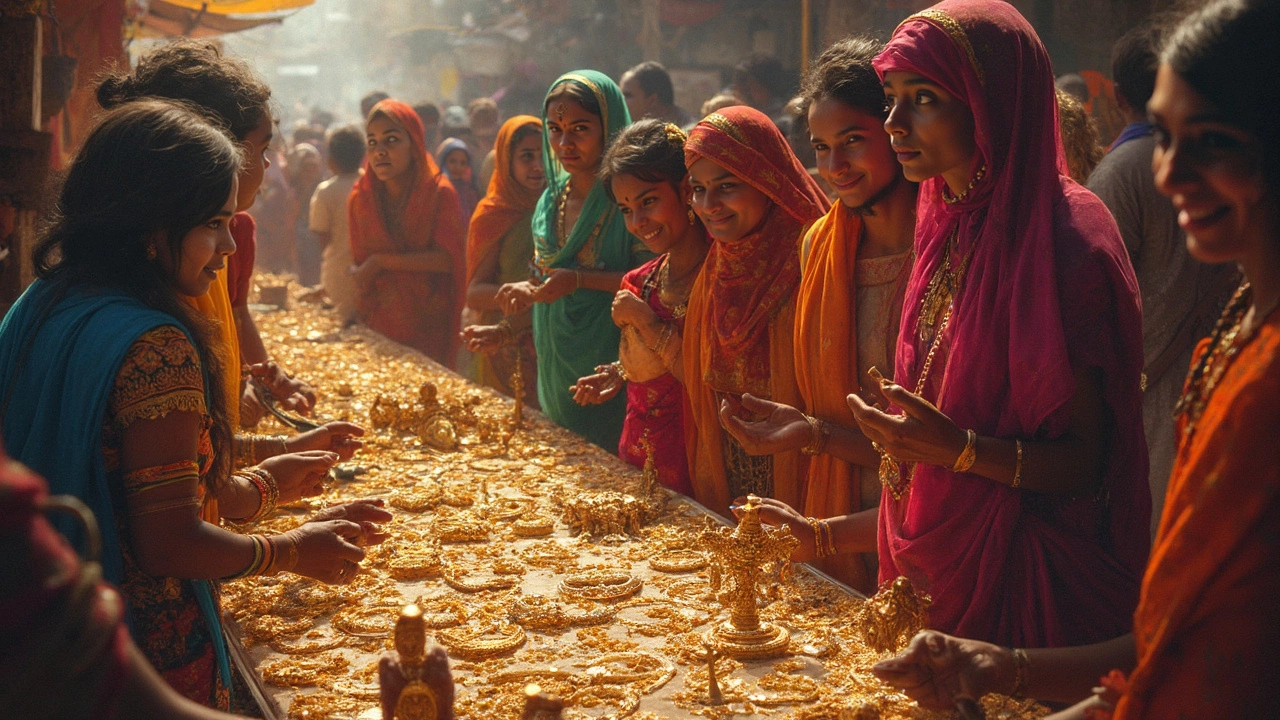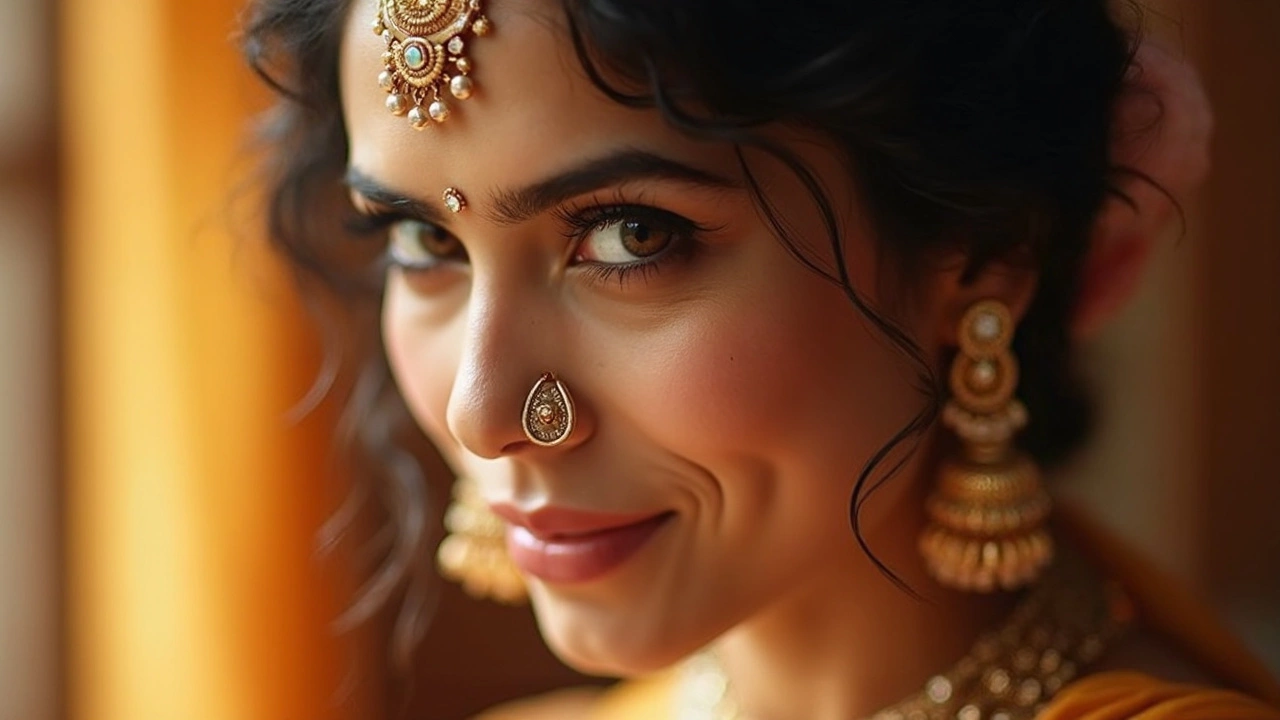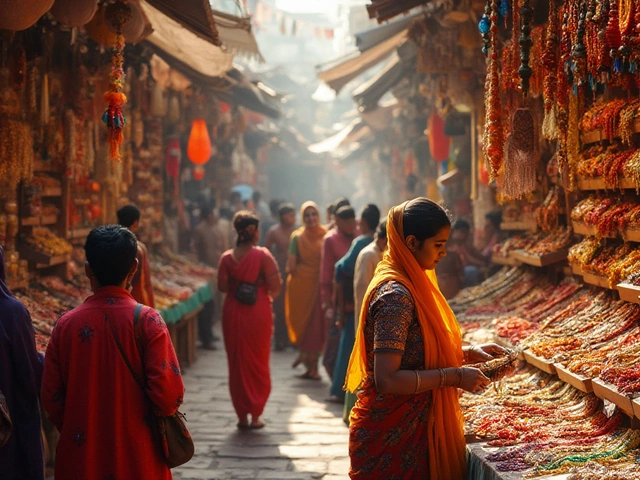
Ever wondered why jewelry plays such a central role in Indian culture? It’s not just about looking good; there’s a tapestry of history and spirituality behind every piece. Imagine this: for generations, families have passed down earrings and necklaces, not just as family heirlooms but as carriers of prayers and stories.
First up, there's temple jewelry. These pieces are crafted with such detail and symbolism, it’s like each one tells a story. This type of jewelry, often made of gold and embedded with precious stones, was originally designed for adorning deities in temples. Over time, it extended beyond sacred spaces, becoming a staple in traditional celebrations and even in daily wear for some.
- Historical Significance of Temple Jewelry
- Symbolism and Meanings Behind Jewelry Pieces
- Jewelry in Religious Ceremonies
- Social and Cultural Impact
- Modern Takes on Traditional Jewelry
Historical Significance of Temple Jewelry
So, what's the big deal about temple jewelry, you ask? Well, this isn't just regular bling! It's deeply rooted in history, going back to ancient times when these pieces were used to honor deities in Hindu temples. Imagine intricate designs showcasing gods and goddesses, all made to please the divine.
Originally, temple jewelry was exclusively crafted for adorning idols in temples across South India. These masterpieces were painstakingly made with gold, silver, and gemstones, and each design carried a specific meaning or symbolism. Eventually, people began to mirror this divine style for use in festivals and weddings, bringing a slice of the sacred into their everyday lives.
- Materials used were primarily gold and precious stones, symbolizing wealth and auspiciousness.
- Designs often include motifs like lotuses and peacocks, which have spiritual meanings.
- The tradition kicked off around the Chola dynasty period, around the 9th to 13th century AD.
One interesting nugget? Many of these original temple pieces have found their way into museums or private collections, cherished for both their beauty and historical value. In fact, reviving these traditional designs has become a trend, and they’re in high demand among both collectors and everyday folks who want a touch of this classic elegance.
Folks in the dance world also cherish these pieces. Yep, if you’ve ever seen a Bharatanatyam or Kathakali performance, you might’ve noticed the elaborate jewelry worn by the dancers. That’s temple jewelry making its way into the performing arts, underscoring its cultural significance beyond just temples.
Symbolism and Meanings Behind Jewelry Pieces
Ever spotted those intricate designs on Indian traditional jewelry and wondered if they’re more than just an amazing craft? Spoiler: they are! Each piece comes with its own meaning, packing more symbolism than a novel.
Let’s start with the bindi, often a gem-studded sticker or an ornament worn on the forehead. In Hindu culture, it’s believed to represent the ‘third eye,’ standing for wisdom and spiritual insight. Not just an eye-catcher but a little symbol of enlightenment. Pretty cool, right?
Then there are anklets, called 'payal.' They’re worn on the feet and often make that soft, rhythmic sound as you walk. Beyond their musical harmony, they’re believed to ward off negative energy. Hey, who doesn’t want a little extra protection with style?
Necklaces, especially the 'mangalsutra,' hold their weight in gold—literally and figuratively. Worn by married women, these are a mark of marital status and signify love and commitment. Typically made with black beads and gold, it's like having your relationship status glittering with every move.
Now, earrings. They’re not just to jazz up your look. Earrings, or 'kundalas,' have a profound meaning, often tied to energy flow and health in Indian traditions. Some followers believe certain metals in earrings can even balance body energies.
Let’s not forget temple jewelry, often worn during festive occasions or dance performances. These pieces, inspired by the gods themselves, reflect moral stories and epic poetry through their designs. They’re like books you wear!

Jewelry in Religious Ceremonies
Jewelry isn't just for glitter and glamour in India; it’s deeply tied to Indian traditional jewelry, especially in religious ceremonies. Think of it as a bridge between the material and the spiritual world. When it comes to temple rituals, specific pieces are often used to adorn deities and beautify the ceremonies, which are an essential part of the culture.
Take wedding ceremonies, for instance. The mangalsutra is more than just a necklace; it symbolizes marital commitment and is believed to protect the couple's bond. These aren’t choices made randomly; they’re rooted in traditions passed down through generations. If you're attending an Indian wedding, you'll notice the sheer amount of jewelry worn by the bride, each piece selected for its significance in blessings and good fortune.
During the South Indian festival of Navaratri, women participate in 'Golu' exhibitions, and they often adorn themselves with temple jewelry. This showcases their devotion and connection to cultural roots. The jewelry, often gold, represents prosperity and purity, things revered in Hindu culture.
Even ceremonies like Karva Chauth, where married women fast for the longevity of their husbands, see women decked out in specific jewelry that holds spiritual importance. Here, the significance of ornaments like the bangles and toe rings often goes overlooked but symbolizes strength, energy, and marital status.
Beyond weddings and festivals, there's the daily reverence to household deities. In many homes, small jewelry items are placed on idols as an offering. This act isn’t just about tradition; it represents blessings and the continuity of belief and cultural identity. The practice underscores how integral Indian jewelry culture is to spiritual life.
Social and Cultural Impact
In India, jewelry is more than just an accessory; it's a cultural marker. You see, wearing jewelry is almost second nature in Indian society. It plays a pivotal role in defining one’s social standing and personal identity. For instance, the Indian traditional jewelry often speaks volumes about a person’s heritage and even their marital status.
From a very young age, you’d often find girls being adorned with small, exquisite pieces, each not only enhancing beauty but also carrying cultural significance. Gold, in particular, is highly prized and almost mandatory in key life events. When you attend an Indian wedding, the sheer brilliance of the temple jewelry can be dazzling, each piece chosen with care to convey a family's history and wealth.
But it’s not just about showing off. Jewelry in India also serves as a form of financial security, especially gold. Many families consider it an investment and a safety net that can be liquidated in tough times. It’s fascinating how something that adorns the skin can also protect one’s financial well-being.
Let’s not forget the regional diversity. In the north, you might see chunky silver pieces, while the south boasts of intricately crafted gold chains. Each region has its unique style, but all share a common cultural thread.
Also, interestingly enough, the Indian jewelry culture is evolving. Modern designs now incorporate traditional elements, making the old new again. This blend keeps the tradition alive while resonating with younger generations who seek a contemporary twist on ancient designs.

Modern Takes on Traditional Jewelry
The world of Indian jewelry is constantly evolving, adapting age-old traditions to fit modern aesthetics and lifestyle choices. This is where the magic happens, blending ancient beauty with new-age flair. The Indian traditional jewelry scene is vibrant, and nowhere is this more true than in the realm of temple jewelry.
These days, you’ll find designers across the world who are putting a contemporary twist on these classic pieces. They're simplifying intricate designs to suit everyday fashion while maintaining the rich symbolism. Think dainty necklaces that echo the grandeur of temple jewelry but won’t weigh you down at a brunch meeting.
There's also a growing trend of mixing metals. While traditional Indian jewelry often boasts gold in all its glory, modern pieces might feature a mix of silver or platinum for a sleek, edgy look. This allows wearers to incorporate a touch of heritage into outfits without going full traditional.
More and more brands are also embracing sustainable practices, using ethically sourced materials to craft these beautiful pieces. This marriage of tradition with modern ethics really speaks to today's conscious consumers.
A fascinating development is how temple jewelry is finding a place in digital fashion shows and international collections. This has catapulted Indian jewelry onto a global stage, capturing the interest of fashionistas everywhere who might not typically explore these styles.
It is not just about aesthetic appeal; there's innovation in technology too. Some pieces now incorporate smart technology, like rings with embedded NFC chips for contactless payments. This unique blend of tradition with tech highlights just how versatile Indian jewelry traditions are in today's world.


